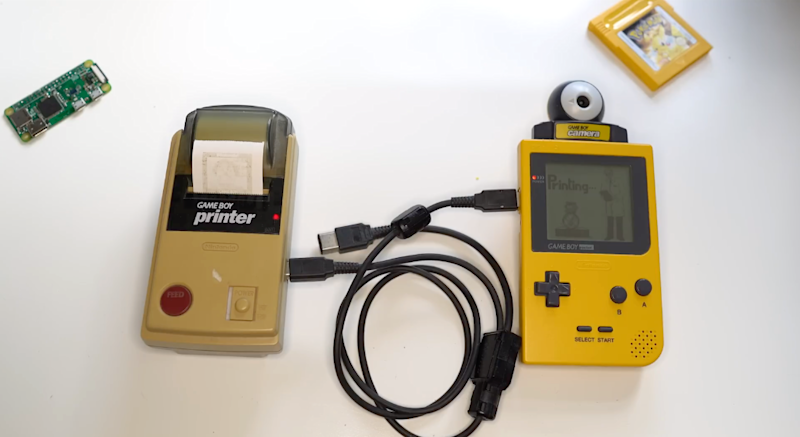When Matt saw the 2.1-inch HyperPixel Round Touch Display in the Pimoroni shop, he decided it looked perfect. “This screen is designed for use with Raspberry Pi, so I used a Raspberry Pi Zero W.” Matt explains that he needed the wireless capabilities to download the photos from NASA. His approach would be similar to that used in his ‘Game Boy Camera Fast Wifi Adapter’ project (featured in The MagPi issue #110), which saw Matt find a way to pull the photos from the handheld console onto his smartphone.
Rounded approach
Although Raspberry Pi Zero W is “way overpowered for the job,” Matt chose it because it offers a quick and easy way for him to bring the project into being. “As always, with anything I’ve made with a Raspberry Pi, the hard bit for me was getting the code to run by itself at startup without any warnings or windows popping up over the top.” Matt also praises Pimoroni, who “have done the hard work of making the round screen so easy to use.” An alternative option would have been to use a microcontroller and a different round screen, but this would have taken far longer, as so many aspects would have needed to have been written or designed from scratch.
Another piece of good fortune was that someone else had already created a really good-looking case for the HyperPixel display that would look great sitting on a desk.
Matt wrote a Python script that checks the Blue Marble API for new EPIC photos, downloads them, and then loops showing each one in sequence on the screen using the Pygame library. The EPIC Daily Blue Marble API is provided by NASA and provides information about the images that the DSCVOR EPIC equipment collects here. Its Earth-Sun Lagrange positioning ensures that it is not just the acronym that is EPIC! It captures unique perspectives of astronomical events, such as lunar transits, using a 2048 × 2048 pixel CCD, coupled to a 30 cm aperture Cassegrain telescope.
Case work
The HyperPixel display was useful on its own, but needed something to hold it at a convenient viewing angle. Matt was about to design his own case, but did a quick check online to see whether anyone else in the community had designed a 3D-printable case for the round screen and Raspberry Pi combo. Happily, he found Cults3D user named ‘Printminion’ who had designed the perfect case.
Since Printminion’s case was specifically designed for the HyperPixel display, Matt was able to focus on how to make use of NASA’s Blue Marble API to get the incredible NASA photos on the screen. The API is named after the famous Blue Marble photo of Earth captured by the Apollo 17 space mission in 1972.
As well as daily images used to form Matt’s EPIC slide show, the API can serve up noteworthy images depicting our exploration of near space, and important images such as partial lunar eclipses and transits.
Matt has created a making-of video for the EPIC Satellite project on his YouTube channel. Look out for updates as he begins to make it even more epic, by adding options to view images of the moon and other planets.






